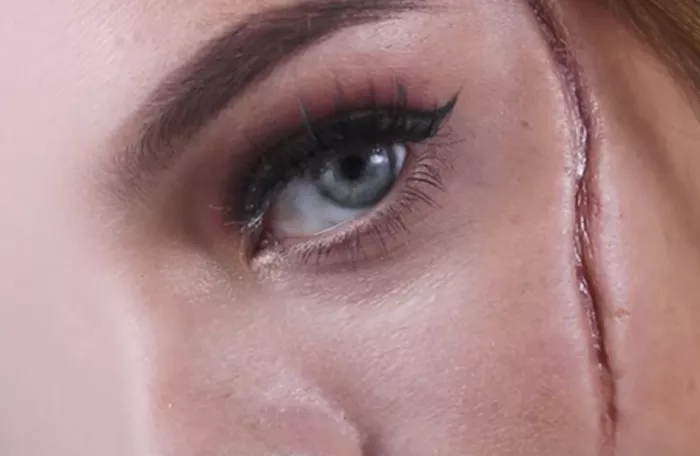Facial scars can have profound effects on an individual’s self-esteem and confidence. They may arise from various causes such as acne, surgical procedures, or injuries. Fortunately, the cosmetic and dermatological field has developed multiple products and treatments that can significantly improve or even diminish the appearance of these scars. This article delves into the best products for treating facial scars, backed by scientific research and dermatological advice.
Understanding Facial Scars
Before choosing a product to treat facial scars, it’s crucial to understand the types of scars and how they form. Scars on the face can appear as a result of the skin’s natural healing process after an injury. Different types of facial scars include:
Atrophic Scars: These are characterized by a loss of tissue. They appear sunken or depressed, and are commonly caused by acne or chickenpox.
Hypertrophic Scars: These are raised scars that stay within the boundaries of the injury site. They occur when the body produces too much collagen.
Keloid Scars: Similar to hypertrophic, but keloids extend beyond the original injury area. They are more severe and may hinder movement if located near a joint.
Choosing the Right Scar Treatment Product
Selecting an effective scar treatment product depends on the type and severity of the scar, as well as individual skin type and sensitivity. Here are some key considerations:
Consultation with a Dermatologist: Before starting any treatment, consulting with a dermatologist can provide tailored advice based on the specific characteristics of your scar and skin type.
Ingredients: Effective scar treatment products often contain certain active ingredients known to aid in scar healing and appearance. It’s important to understand these ingredients and how they benefit the skin.
Skin Type: Consider whether your skin is oily, dry, sensitive, or combination, as some products may exacerbate skin issues unrelated to the scar.
Effective Ingredients in Scar Treatment Products
The effectiveness of scar treatment products largely depends on their active ingredients. Here are some of the most clinically supported ingredients that help improve the appearance of facial scars:
Silicone-Based Products
Mechanism of Action: Silicone sheets and gels help hydrate the scar and reduce the production of excess collagen. This can flatten and soften raised scars and reduce redness and discomfort.
Usage: Silicone gel should be applied twice daily for several months for best results. Silicone sheets can be worn for 12-24 hours per day.
Hydroquinone
Mechanism of Action: Hydroquinone is a skin lightening agent that can reduce hyperpigmentation associated with certain scars.
Usage: Due to potential side effects, hydroquinone should be used under the guidance of a dermatologist.
Alpha Hydroxy Acids (AHAs)
Mechanism of Action: AHAs like glycolic acid and lactic acid promote exfoliation of the outer layers of the skin, encouraging new, scar-less skin to replace it.
Usage: AHAs are available in various concentrations; lower strengths can be used at home while higher strengths should be applied by a professional.
Onion Extract
Mechanism of Action: Found in products like Mederma, onion extract is believed to improve collagen remodeling, reduce inflammation, and improve the overall texture and appearance of scars.
Usage: Consistent application as per product instructions is necessary to see results.
Retinoids
Mechanism of Action: Retinoids, such as Retin-A (tretinoin), help speed up cell turnover, diminish discoloration, and improve skin texture.
Usage: Retinoids can cause skin irritation and should be used according to a dermatologist’s directions, typically in the evening to avoid sun sensitivity.
Comparing Popular Scar Treatment Products
Given the wide array of products available, here is a comparative analysis of some popular scar treatment products:
Mederma Advanced Scar Gel
Target: Good for both new and old scars from surgery, injury, acne, or burns
Active Ingredient: Onion extract
Pros: Clinically proven to improve color, texture, and overall appearance of scars
Cons: Requires diligent application over several months
Bio-Oil Skincare Oil
Target: Effective for scars, stretch marks, aging, and dehydrated skin
Active Ingredients: Vitamin A, Vitamin E, Calendula oil, Lavender oil, Rosemary oil, and Chamomile oil
Pros: Hydrating properties and affordable
Cons: Oil-based, which might not be suitable for all skin types, especially oily skins
Cica-Care Silicone Gel Sheet
Target: Designed for hypertrophic and keloid scars
Active Ingredient: Silicone
Pros: Reusable, clinically proven to be up to 90% effective in improving red, dark, or raised scars
Cons: More expensive, needs to be worn up to 12 hours a day
Integrating Scar Treatments into Your Skincare Routine
Incorporating scar treatments into your daily skincare routine requires consistency and patience:
Application Frequency: Most treatments require application once or twice a day. Consistency is key for effectiveness.
Sun Protection: Always use a broad-spectrum sunscreen to protect the scarred areas from UV exposure, which can worsen their appearance.
Monitoring Progress: Keep track of your scar’s progress through photos and regular skin examinations.
Safety Considerations and Possible Side Effects
While scar treatment products are generally safe, they can cause side effects such as irritation, redness, or allergic reactions in some people. Always patch test a new product and consult with a dermatologist if you experience severe side effects.
Conclusion
Choosing the best product for facial scars depends on understanding the specific type of scar, the active ingredients in potential products, and how they fit into your overall skin care regimen. With the right approach and product, significant improvement in the appearance of scars is achievable. Remember, treating facial scars takes time and patience, and results vary based on individual skin characteristics and the nature of the scar. For the best outcome, combine your chosen treatment with professional advice and a healthy skincare routine.
[inline_related_posts title=”You Might Be Interested In” title_align=”left” style=”list” number=”6″ align=”none” ids=”7900,7848,7808″ by=”categories” orderby=”rand” order=”DESC” hide_thumb=”no” thumb_right=”no” views=”no” date=”yes” grid_columns=”2″ post_type=”” tax=””]
































